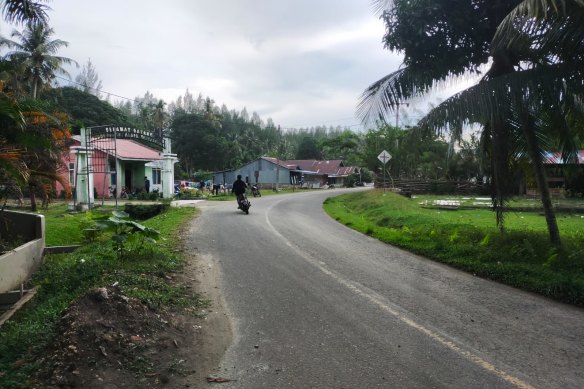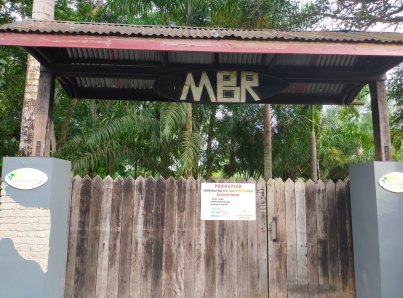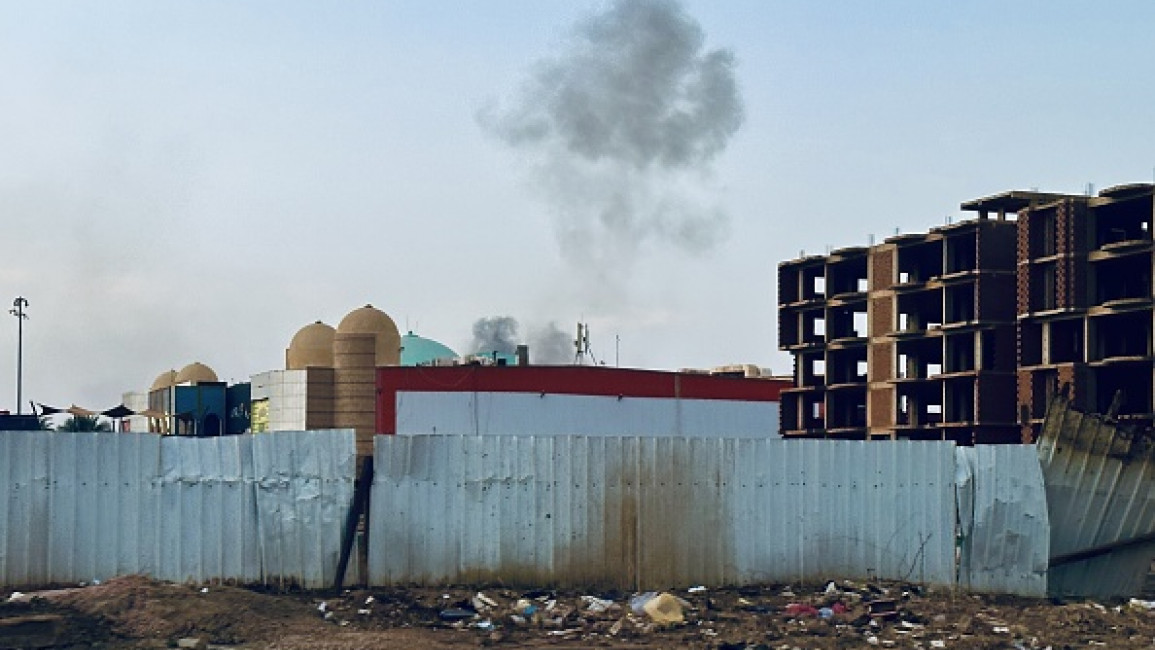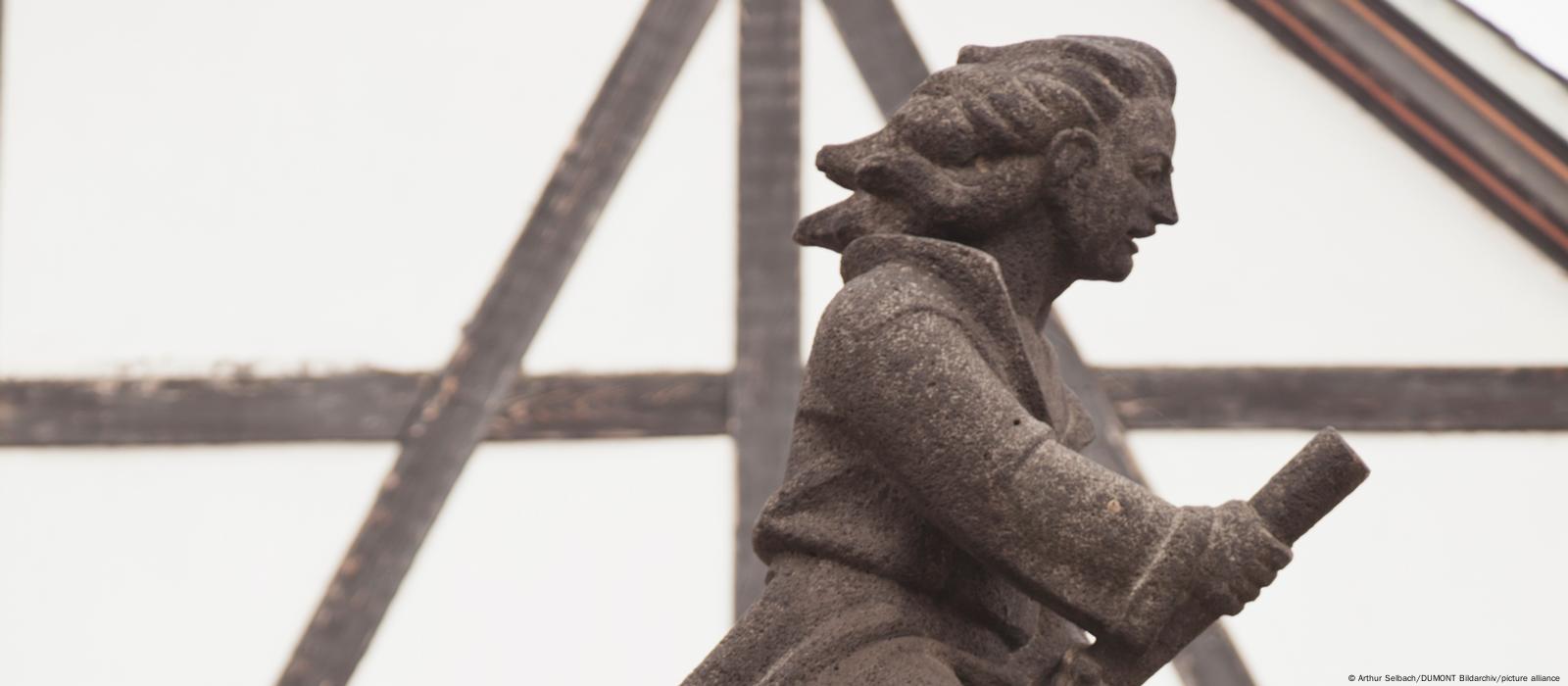
A witch in the family
Karin Helmstaedt, DW
For Walpurgis Night, the April 30 feast associated with witchcraft in German folklore, DW's Karin Helmstaedt looked into the tragic story of her ancestor who was burned as a witch in Winningen.
I remember the day I learned we had a witch in the family. I walked with my parents up a leafy hillside overlooking Winningen, a picturesque wine-making town on the banks of Germany's Moselle River. It was a pilgrimage to the top of the "Hexenhügel," or Witches' Hill, where a sombre obelisk commemorates 21 people who died as a result of the Winningen Witch Trials.
For a Canadian kid just discovering Europe, it was quite a revelation. My mind was instantly filled with horrifying images. I ran my finger over the rough engraving of my 9th great-grandmother's name: Margarethe Kröber. She had died over 300 years earlier, burned as a witch in November 1642.
Decades later, I was still haunted by her story and tried to find out more.
"Her case is particularly tragic," historian Walter Rummel told me. The hands-down expert on the topic in Winningen says the area was unique for the fact that its extensive witch trial records — over 8,000 pages worth — were not only highly detailed but also extraordinarily well preserved. Cross-referenced with tax records, church and commercial registers, they offered a window into how the townspeople reacted to the threat of alleged witches in their midst — and how some knew to use the situation to their advantage.
A complex chapter
The European Witch Hunts represent a complicated chapter, and by its very nature misconceptions abound.
Add literature, radical feminist politics and the rise of Neo-Pagan religious movements like Wicca into the mix — and things get even murkier. From the Brothers Grimm to the Wizard of Oz, mythology surrounding the figure of the witch has been crystallized into our cultural subconscious.
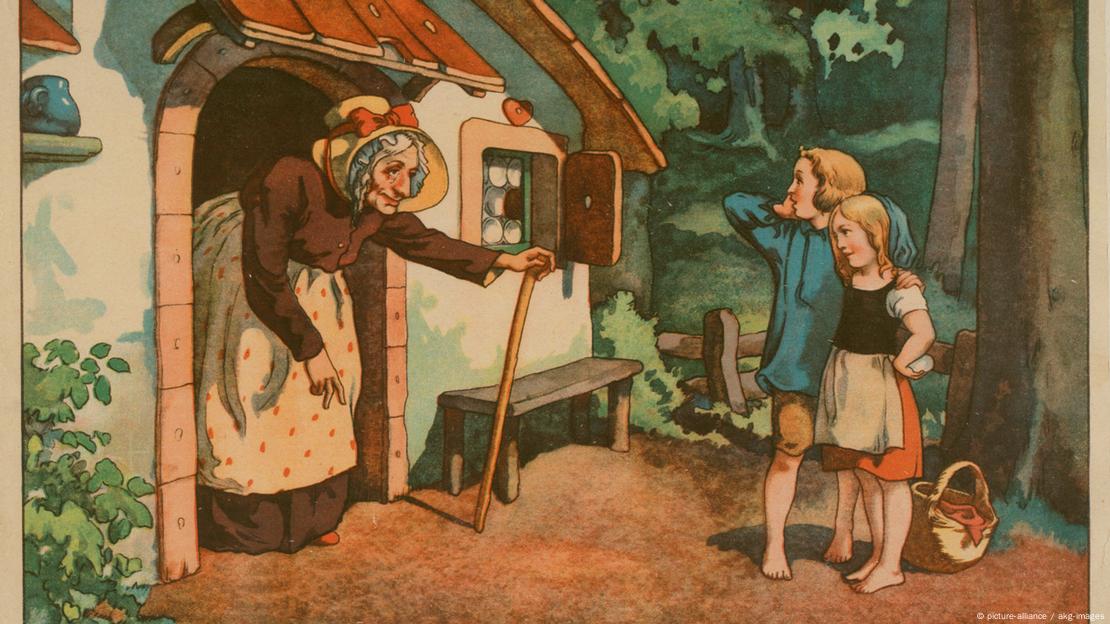
But beyond the imagery we often see as historical fact — for instance, that witches were burned at the stake in the Middle Ages, that midwives or red-haired women were most likely to be targeted, or that witch hunts were an instrument of the patriarchal Church to keep women down — things were far more complex. Early modern Europe saw a collusion of circumstances — social, political, religious and climactic — that set the stage for three centuries of witch hunts.
Wolfgang Behringer, an expert on early modern history, researched this tumultuous period and found that the major waves of witch hunts in Europe were linked with a noticeable climatic deterioration now referred to as the Little Ice Age (1306-1860), when a prevalence of epidemics and natural disasters meant European populations were massively stressed — and looking for explanations.
"If we assume that failed harvests played a big role in the desire for witch hunts, then we find that most of them are not initiated by the State or the Church, but rather by the populace," said Behringer, who describes with hunts as a "form of protest" initiated by citizens.
Witch hunts had less to do with religion and more to do with forms of settlement, added Behringer: "There are practically no witch hunts in nomadic societies, or if a population is sparse. The village structure where people sit on top of each other, watch each other and get suspicious if any misfortune occurs, is (a more likely scenario for witch hunts) as so often witch trials are about subsistence."
According to Rita Voltmer, historian and author of "Hexen" (2008), the figure of the witch was repeatedly instrumentalized — and romanticized — by early feminists like Matilda Joslyn Gage and even by Nazi propagandists to bolster the argument that the Catholic Church was the main driver of witch hunts.
"They were all part of this movement that took up the idea of the wise woman priestess — sometimes of Celtic origin, sometimes of Germanic origin — and that the blond and red-haired women, our forefathers and mothers, were deliberately persecuted by the Jewish-influenced Christian Church that was out to destroy the true Germanic race," she said.
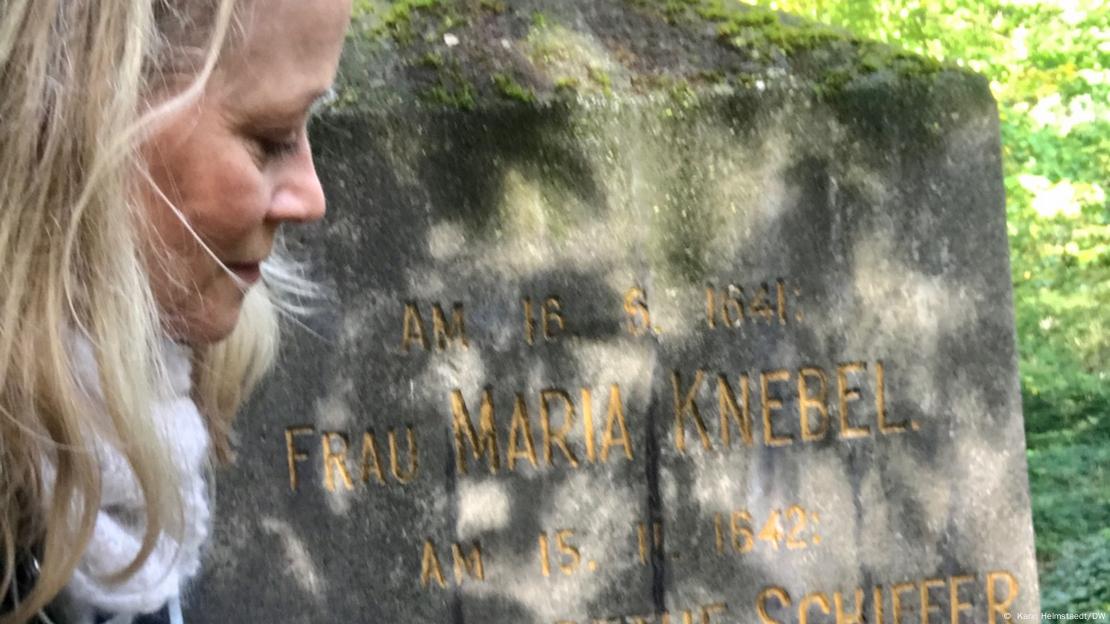
A lethal mix in Germany
Currently experts agree that some 50-60,000 people died between 1450 and 1789 in Europe as a result of witch hunts. And while there were "hot spots" in many countries, it's a grim fact that roughly half — or 25,000 — were killed within the boundaries of present-day Germany.
Nearly 80% of the victims were women, but there were stark regional variations and in places like Iceland, Russia, or the province of Normandy, the vast majority of those accused of witchcraft or sorcery were men.
In Germany, then part of the Holy Roman Empire, the persecution of witches had a legal basis, thanks to the "Peinliche Gerichtsordnung" enacted by Emperor Charles V in 1532. This early penal code, also known as the "Carolina," counted sorcery as a serious crime.
From then on witch trials across the Empire could supposedly be conducted in the name of law and order, but divided as it was into countless entities, and coupled with religious pressure and conflicts in the wake of the Reformation, Germany's social fabric made for a particularly lethal mix.

Anatomy of a witch trial
Which brings us back to Winningen. Of the 24 people accused there of witchcraft, 19 were executed, two died in prison, and the remaining three managed to fight their case and be acquitted.
My ancestor Margarethe came from a well-situated family. She married Zacharias Kröber, a judge, so together they belonged to the town's social elite. Written records indicate that she had a rebellious nature. She had been married eight years and had two small boys when she was officially denounced for being a witch.
And it turns out she wasn't the only one in the family to die on the Witches' Hill. Margarethe's own mother was in fact the first person in Winningen to be executed for witchcraft. Subsequently her aunt, her cousin and, as time went on, all her sisters and brother-in law met the same fate.

A clear case of the the upper crust being a target of witch hunts, which was typical for this area, but even Walter Rummel agrees the systematic destruction of an entire generation of Kröber spouses is exceptional. "Witchcraft was an accusation that couldn't be topped," he said, "and like a reactor, it irradiated everyone and everything around it."
Through the witch trial protocols, all in ornate 17th-century script, I learned that she was accused of a long list of charges, including attending a Witches' Sabbath, flying and poisoning people.
Margarethe had thumbed her nose at any rumors surrounding her for years, but was eventually arrested, strip searched, shaved and interrogated. She denied all the charges against her, and called on her husband to vouch for her innocence.
But in a heartbreaking turn of events — and ostensibly to protect his position in the town — Zacharias left her in the lurch, claiming that if she was a devout Christian, her body would withstand the torture, and that at any rate, she should simply confess "because you know you're a witch."
The cruelty of Europe's witch trials
An estimated three million witch trials took place between 1450 to 1750. Around 60,000 people met gruesome deaths.Image: Imago Images/United Archives International
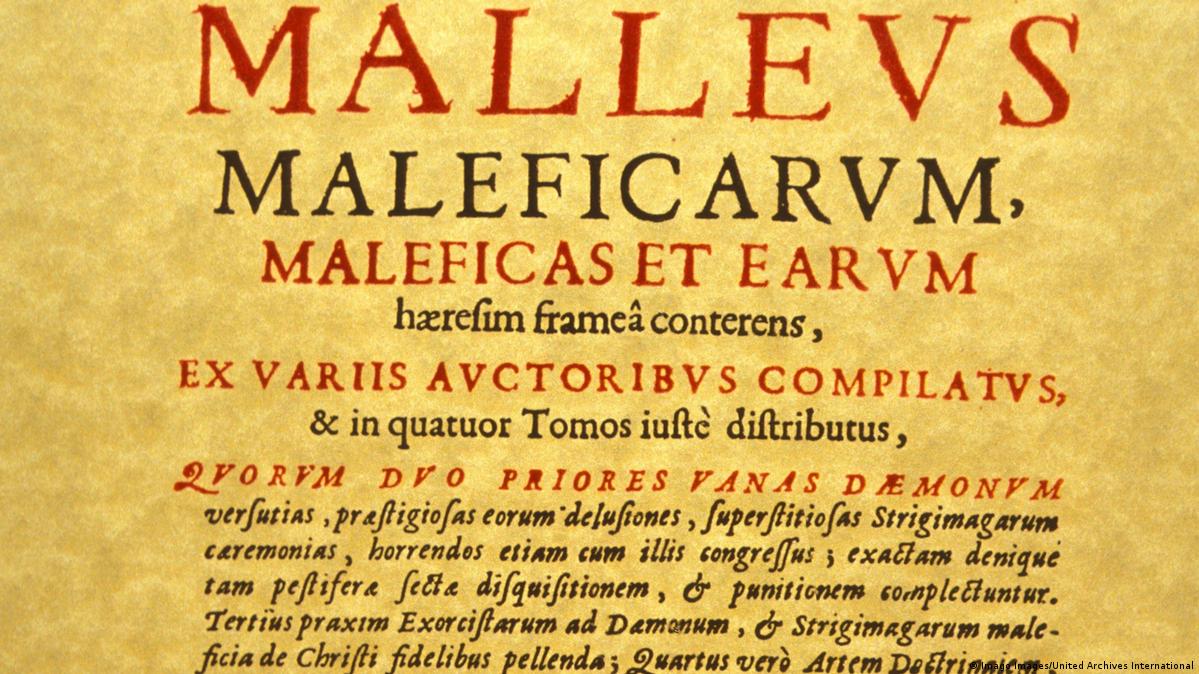
Thousands of deaths at the stake
A leaflet in 1555 reports "a shocking scene" and shows the burning of alleged witches in Derenburg. It occurred during the peak of Europe's witch-hunting madness, which took place from 1450 to 1750. Interestingly, it was not way back in the Middle Ages, but rather in modern times that witch hunting reached its peak. In Germany, tens of thousands of "witches" were burned alive.Image: picture-alliance/dpa
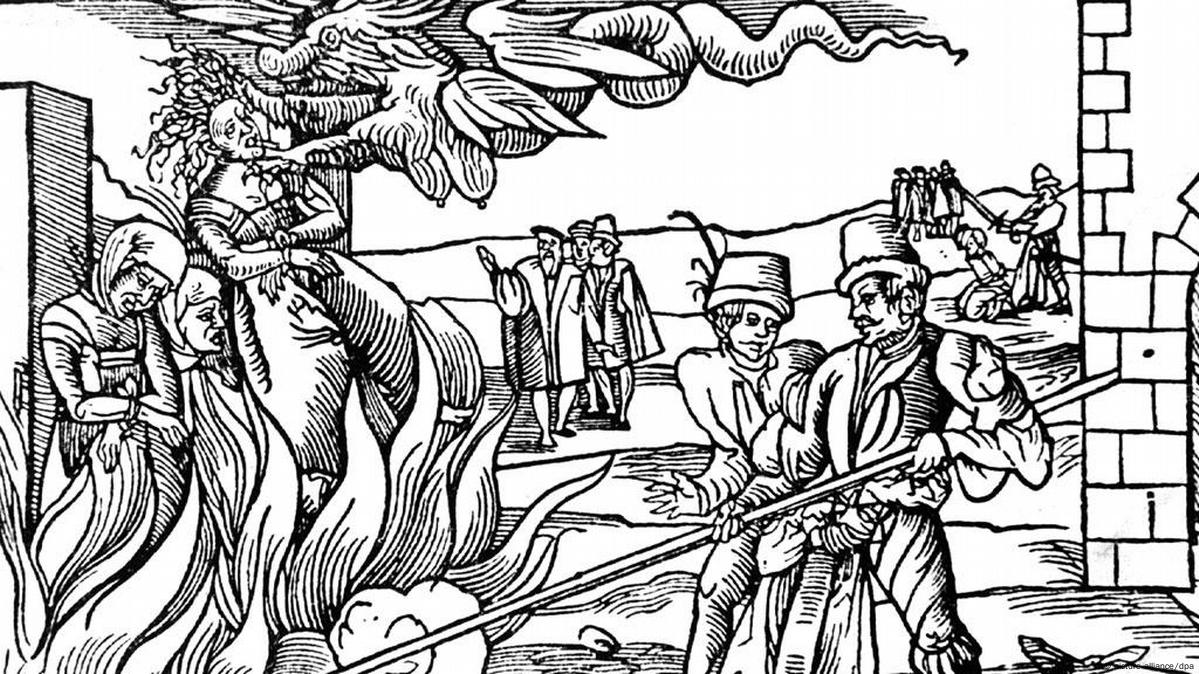
9 images
To extract her "confession," the Witch Commission then resorted to torture, using crushing devices such as the so-called "boot," and submitting her to "reverse hanging."
At this point the trial records are excruciating to read. Her screams and suffering — "clamat et torturam" — were duly recorded. Tragically, her only way out of the torment was to lie — a mortal sin from a devout 17th-century perspective.
After two days of agony, she confessed to being a witch, effectively sealing her own death sentence. She was also forced to denounce another woman for witchcraft, ensuring the cycle of witch hunts could continue.
Two days later she was hauled up to the execution site and forced to beg forgiveness from the townspeople who had gathered to witness her execution. Thus exonerated, she was granted a "merciful" death by beheading before her body was burned.
The final anomaly came next in the form of a feeding frenzy: According to records, 250 liters of wine were carted up to the execution site — ensuring the whole town was complicit, while the caterers made a killing. Margarethe's husband was handed the bill.
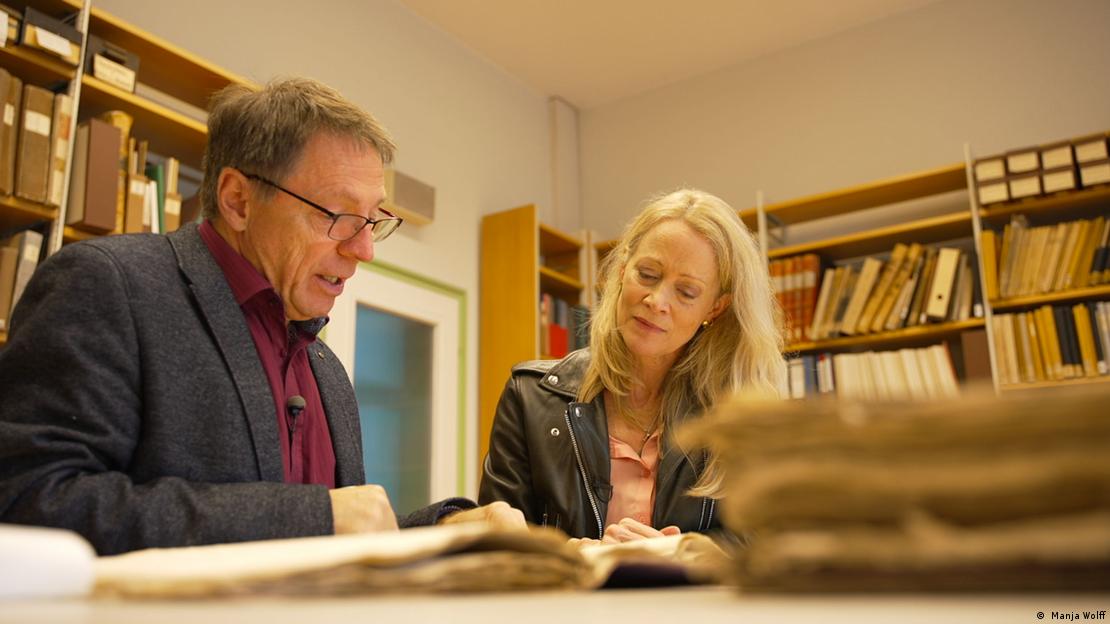
In short, power, money, envy and resentment were behind the witch trials which, in Winningen, were always directed at society's upper echelons.
The last witch trial in Winningen in 1659 did not end in execution, as families mobilized resources to fight for their alleged witches' cause. It was the beginning of the end — as people simply doubted so many could be guilty of witchcraft.
Witch hunting hysteria in Europe began to die down as key laws were changed. The age of Enlightenment meant science and reason took precedence over superstition. Food was more plentiful, and the advent of insurance meant people were less prone to disaster.
The last alleged witch in Europe was beheaded in Switzerland in 1782 — marking the end of a dark chapter in European history.
Edited by: Elizabeth Grenier
Wednesday, April 30, 2008
Worth Reprinting
 April 30 is Walpurgis Nacht; Night of the Witches which corresponds to Samhain; Halloween, October 31 as both days herald a major year changing festival.
April 30 is Walpurgis Nacht; Night of the Witches which corresponds to Samhain; Halloween, October 31 as both days herald a major year changing festival.Walpurgis heralds May Day, Samhain heralds All Saints Day.
They are opposite ends of the season. One is spring planting and the other is fall harvest.
And of course April 30 is the time the devil asks for his due;





